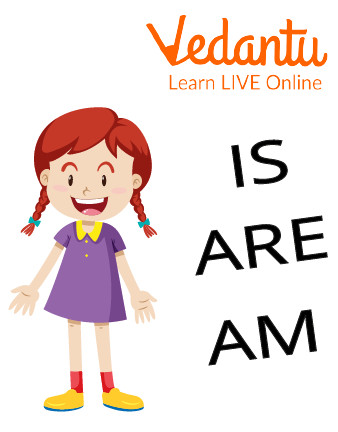Class 3 English Grammar Ncert Solutions Is Am Are
FAQs on Class 3 English Grammar Ncert Solutions Is Am Are
1. How do you solve NCERT exercises for Class 3 English on the use of 'is', 'am', and 'are'?
To correctly solve NCERT questions about 'is', 'am', and 'are', you should follow a simple, step-by-step method:
- Step 1: Identify the subject of the sentence (the person or thing the sentence is about).
- Step 2: Determine if the subject is singular (one), plural (more than one), or the special pronoun 'I'.
- Step 3: Apply the correct verb: use 'am' with 'I', 'is' with a singular subject (like 'He', 'She', 'It', 'a cat'), and 'are' with a plural subject (like 'We', 'They', 'cats').
2. What is the correct method for choosing between 'is', 'am', and 'are' in a sentence according to the CBSE pattern?
The correct method, as per the CBSE syllabus for Class 3, is based on subject-verb agreement. The rule is as follows:
- Use am only with the pronoun I. (Example: I am a student.)
- Use is with singular nouns and pronouns like He, She, It, this, that. (Example: She is my friend.)
- Use are with plural nouns and pronouns like We, You, They, these, those. (Example: They are playing outside.)
3. Why is 'am' only used with 'I' in Class 3 English grammar exercises?
'Am' is a special form of the verb 'to be' that is exclusively paired with the first-person singular pronoun 'I'. This is a fundamental rule in English grammar. In Class 3 exercises, this distinction is important to teach students how to correctly talk or write about themselves. While 'is' and 'are' are used for other people or objects, 'am' is reserved for the speaker, ensuring clarity about who the sentence is describing. For example, 'I am tall' correctly describes oneself, whereas 'I is tall' is incorrect.
4. How can I use NCERT solutions to correct a sentence with the wrong helping verb? Provide an example.
NCERT solutions guide you to find and fix the error. For an incorrect sentence like, "The dogs is barking," the step-by-step correction would be:
- Identify the subject: The subject is 'The dogs'.
- Check if singular or plural: 'Dogs' is a plural noun (more than one dog).
- Apply the correct verb: The rule is to use 'are' with plural subjects.
- Correct the sentence: "The dogs are barking."
5. What are common mistakes students make when solving questions with 'is' and 'are', and how do NCERT solutions help avoid them?
A very common mistake for Class 3 students is using 'is' with a plural subject (e.g., "My friends is here") or with the pronoun 'You' (e.g., "You is kind"). NCERT solutions help prevent this by repeatedly reinforcing the core rule: 'is' for singular subjects and 'are' for plural subjects and 'You'. By providing clear, step-by-step answers for numerous examples, these solutions train students to automatically check the subject before choosing the verb, turning the rule into a habit.
6. Do 'is', 'am', and 'are' always describe an action? How are they used as helping verbs in the Class 3 syllabus?
No, 'is', 'am', and 'are' do not show action themselves. They are 'be' verbs, often called helping or linking verbs. Their main job is to connect the subject to a description or another verb. For example, in the sentence "She is happy," the word 'is' connects the subject 'She' to the description 'happy'. In the sentence "He is reading," the word 'is' helps the main action verb 'reading'. The Class 3 syllabus focuses on using them correctly to form complete and meaningful sentences.
7. Where can I find reliable, step-by-step NCERT Solutions for the Class 3 English topic 'is, am, are' for the 2025-26 academic year?
You can find the most reliable and clearly explained NCERT Solutions for Class 3 English, including the topic 'is, am, are', right here on Vedantu. Our solutions are prepared by subject-matter experts and are fully aligned with the latest CBSE 2025-26 curriculum. Each answer is broken down into simple steps to help you understand the correct method of solving grammar exercises and score better marks.





















